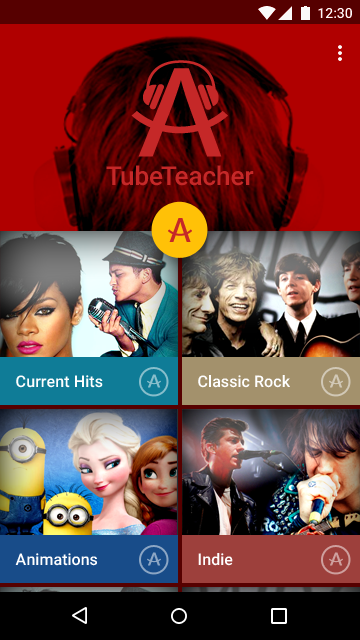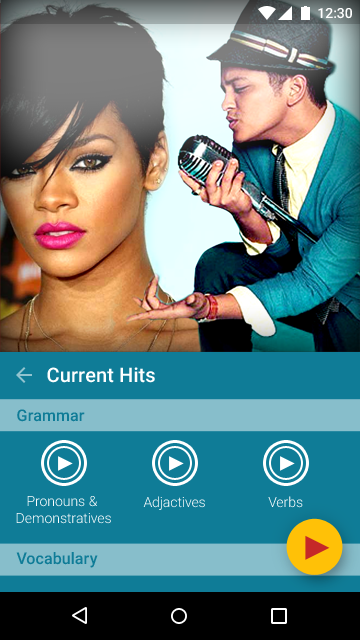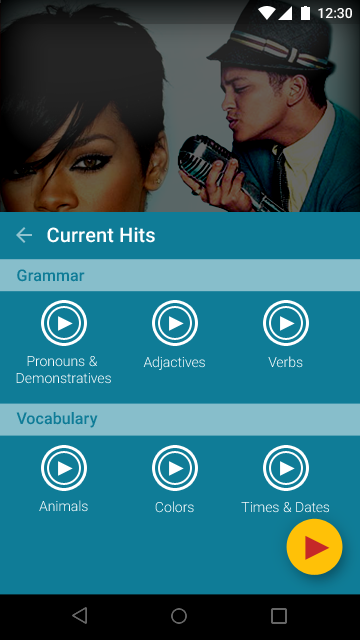1. Background
Each year Google gathers developers from across the country to teach them about material design development, helping them to cross the gap between plain Java programming and the native android design purposed programming. On the last month of each of these workshops, digital designers are invited to join hands with the developers, in an effort to create more finished (and ultimately better) submissions, as they too get a month of lectures from top industry personnel in the field of mobile design.
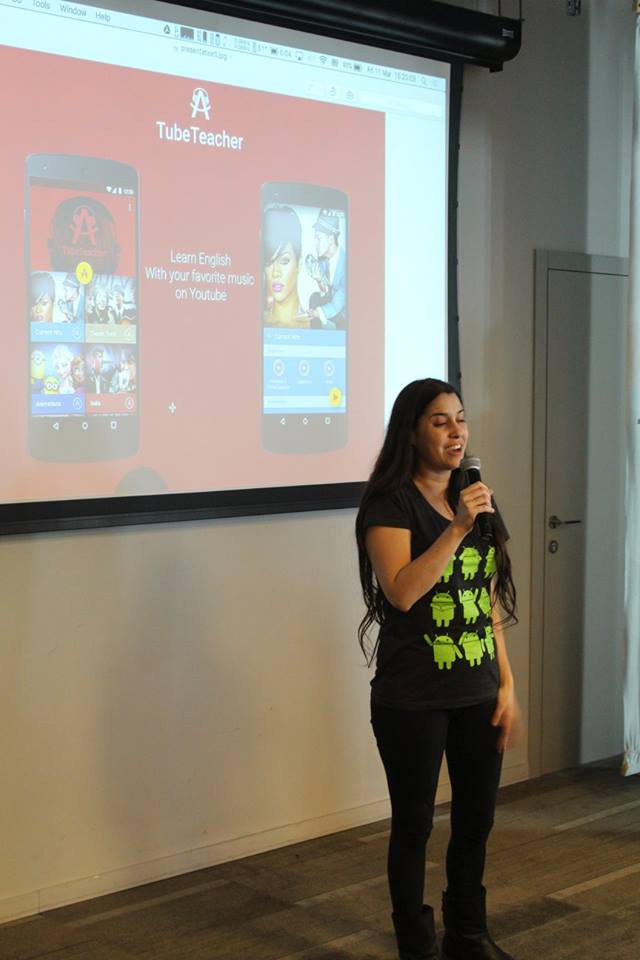
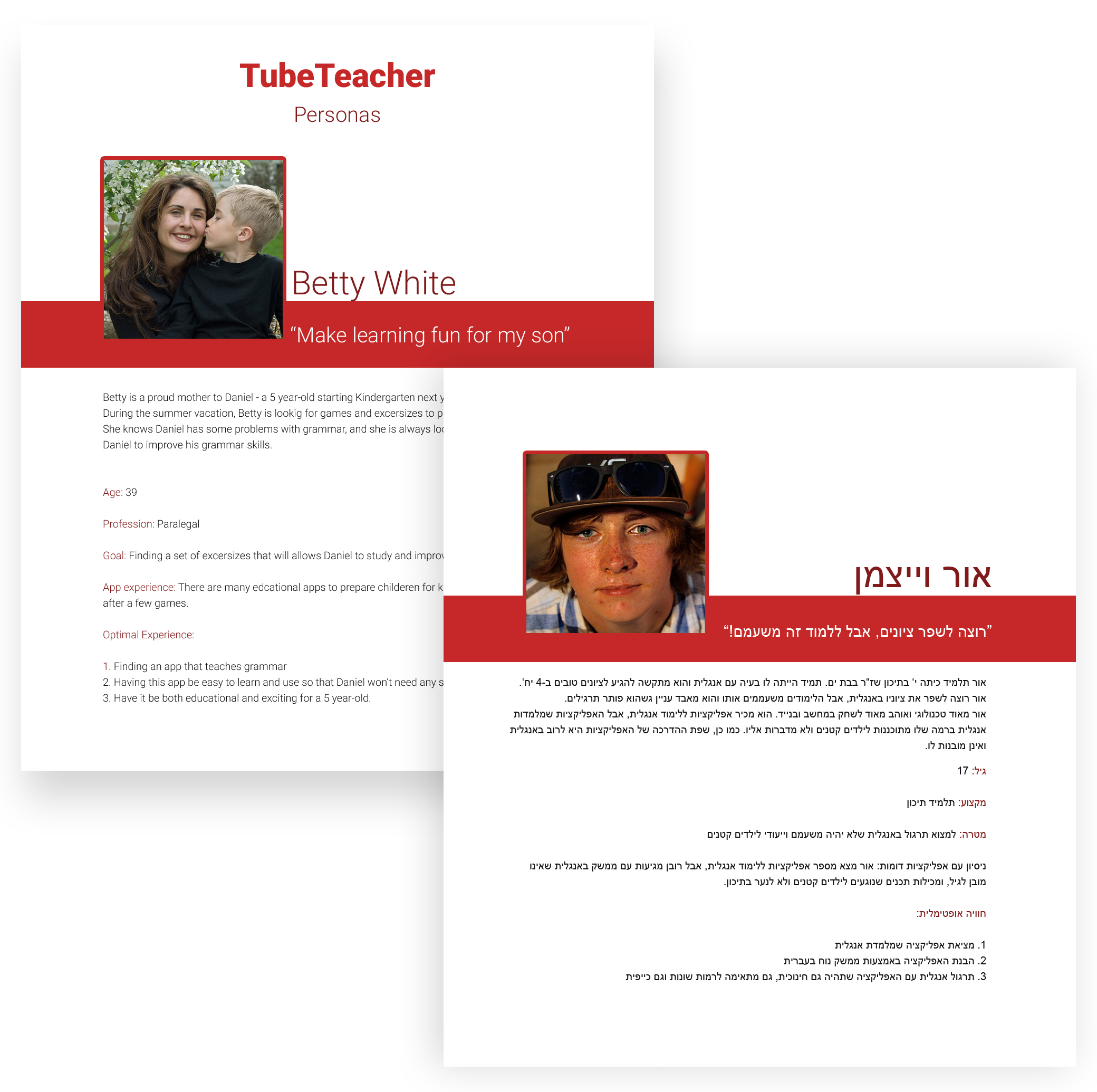
2. Research
During the research stage i've explored different language learning apps, and conducted interviews with students, teachers, and parents, to fully understand user needs and existing solutions, and created user personas by which our product was inspired.
3. Dev Guides
When development was initiated, I made sure to give my developers relevant instructions, and supplied all the needed redlines and guides in a complete style guide. Some example from this style guide:
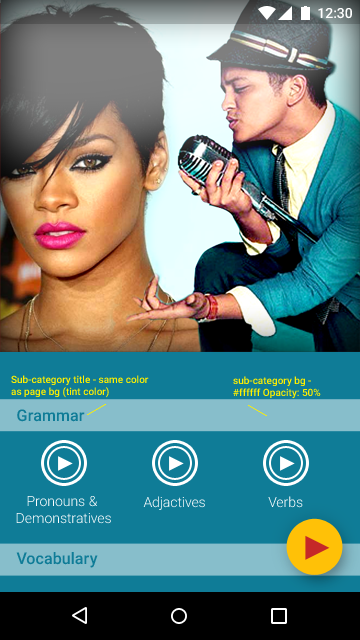
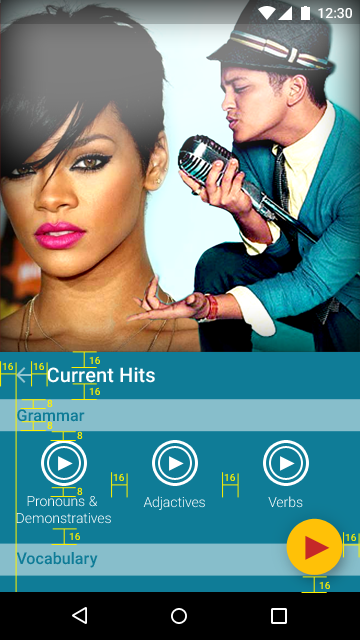
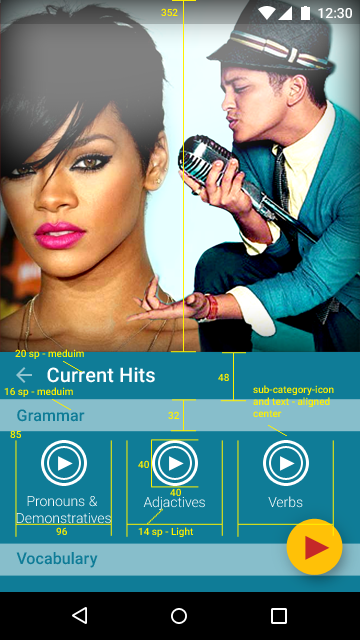
Ideation
The idea for an app to help teach English was made by my partner, an android developer, who came up with the functionality of dragging-and-dropping letters, to create a fun word puzzle game. When approaching me with his idea, which he has begun programming, I wanted not to steer too far from his original plan, but to add some excitement and product value. My initial idea was to use the Youtube API, along with a lyrics DB API, to create a multilevel learning app, so that the user can search for a certain song they like, and the app will use that song's lyrics to create spelling exercises with different levels of difficulties, based on the user's progress.
Advantages of this idea included:
- Automatically generated content - The original plan was to have two interfaces, the first one would be for parents / teachers, and will allow them to create lists of words which will then be used to make word puzzles for their children / students. This idea had two major flaws. One would be the inability of an individual (of any age) to learn independently without the involvement of an authority figure. The second flaw was the complete reliance of the product on a human user to make it at all usable.
- Addressing all ages and all knowledge levels - By researching language studies techniques, we were able to offer a more comprehensive product, which will not only be useful to teach students how to spell, but will actually offer a complete language learning tool, based on the way this language is taught within the school system.

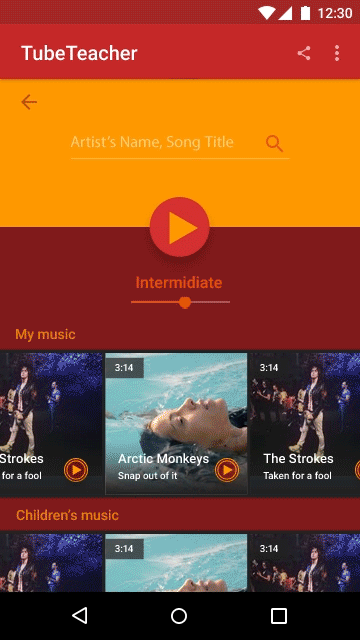
3. Challenges and Solutions
Challenges
After further researching the technologies we came across some difficulties realizing this idea:
- Lyrics DBs found offered a very limited supply of songs, and some did not offer full lyrics.
- Youtube's API had some restrictions which we were not able to fully estimate before actual use.
- Copyright infringement issues needed to be addressed
Solutions
- In order to avoid copyright infringement I decided not to base our product on full songs, but on general music genres.
- Based on these genres I created games by video editing different music videos to create mix-up videos with subtitles. Video games were specially made to accommodate the different learning categories (pronouns and demonstratives, adjectives, verbs etc.)
- With these changes we could also offer translation for songs featured within each game, and ultimately present a better learning experience.
